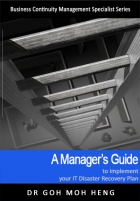Redundant Arrays of Independent Disks (RAID)
| 1. Redundant Arrays of Independent Disks or RAID is a group of disks that is configured to appear as a single disk drive to the host.
Notes (1): These independent disks or RAID uses many smaller disks instead of using one large disk to store data, because this is a less expensive approach to using many low-cost drives as a group to improve performance, yet also provides a degree of redundancy that makes the chance of data loss remote. Related Terms: Mirroring, Duplexing, Resilient Storage Implementation, Data Protection/Recovery Strategy - Category.
Courses
| ||||||||
2. A way of storing the same data over multiple physical disks to ensure that if a hard disk fails a redundant copy of the data can be accessed instead. Example schemes include mirroring and RAID–5.
(Source: Microsoft Storage Glossary)
3. A mechanism for providing data resilience for computer systems using mirrored arrays of magnetic disks.Different levels of RAID can be applied to provide for greater resilience.
(Source: OGC, Information Technology Infrastructure Library (ITIL) v3)

